People don’t follow titles, they follow insights they can trust.
In a time when expert voices are everywhere, it’s the ones delivering real value that stand out. For professionals like you, becoming a trusted voice means translating hard-won industry expertise into ideas your audience can use today, ideas that shape tomorrow’s conversations.
What Is Thought Leadership?
The answer isn’t a glossy title or a single viral post. It’s a body of work that audiences cite when they need clarity, peers reference when they need context, and competitors respect when they need direction.
True thought leadership is the consistent practice of turning frontline experience into influential insights that move a market forward in a way that the audience instantly recognizes as authentic, data-grounded, and actionable.
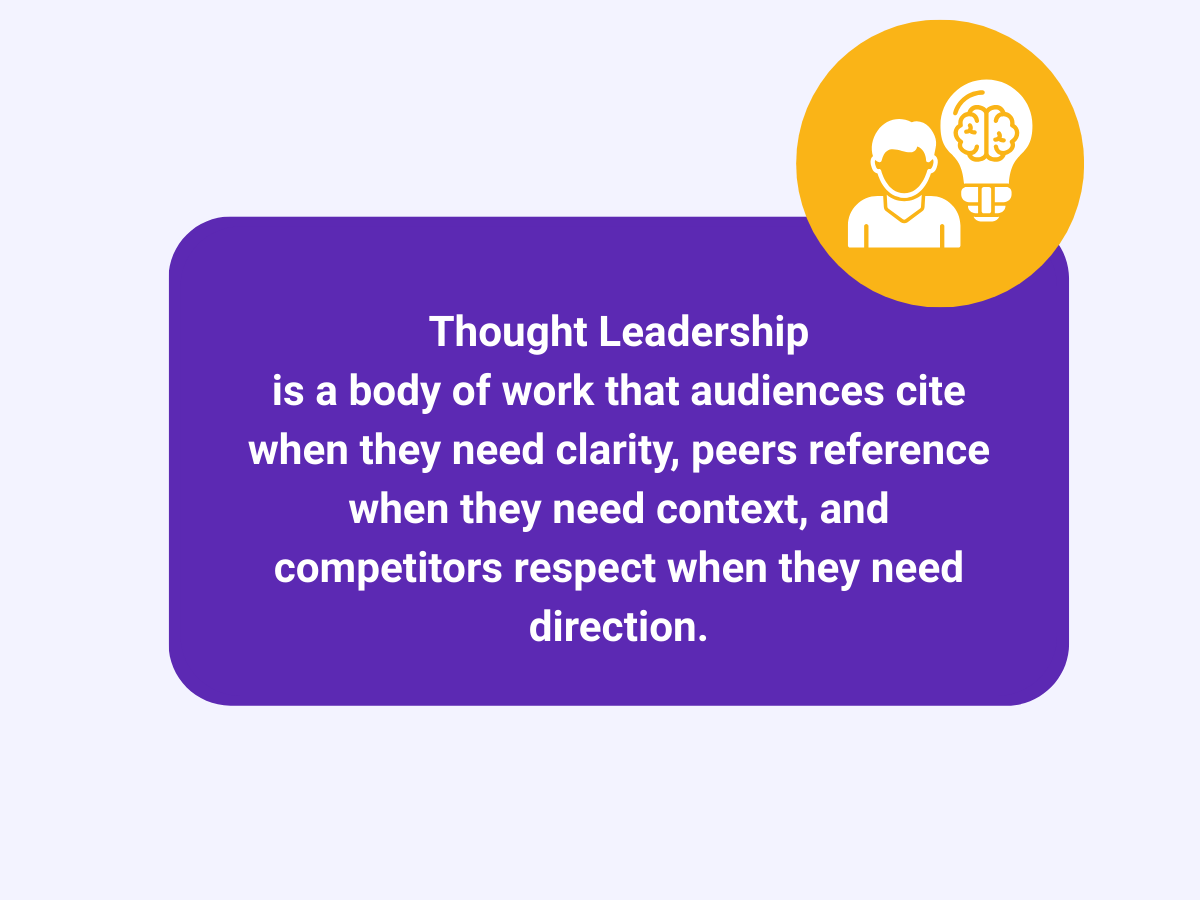
True thought leaders occupy a unique leadership positioning where:
- Ideas are evidence-backed, yet human-centered. They connect C-suite metrics with real-world stories, making complex points simple without dumbing them down.
- Delivery is consistent across channels. Whether it’s a keynote, a LinkedIn thread, or a whitepaper, the voice and value stay unmistakably yours, building brand authority over time.
- Reputation compounds. Each insight reinforces the last, turning a single article or talk into a growing moat of professional reputation and a trusted voice in the space.
How Thought Leadership Impacts Business Growth
The value of a strong thought leadership strategy is backed by data, not just opinion. Edelman’s research shows that nearly 52% of decision-makers and 54% of C-level executives constantly consume thought-leadership content, viewing it as more trustworthy and attention-worthy. Put simply, people view thought leadership content as a more reliable way to judge a company’s or a person’s capabilities than product brochures or sales decks.
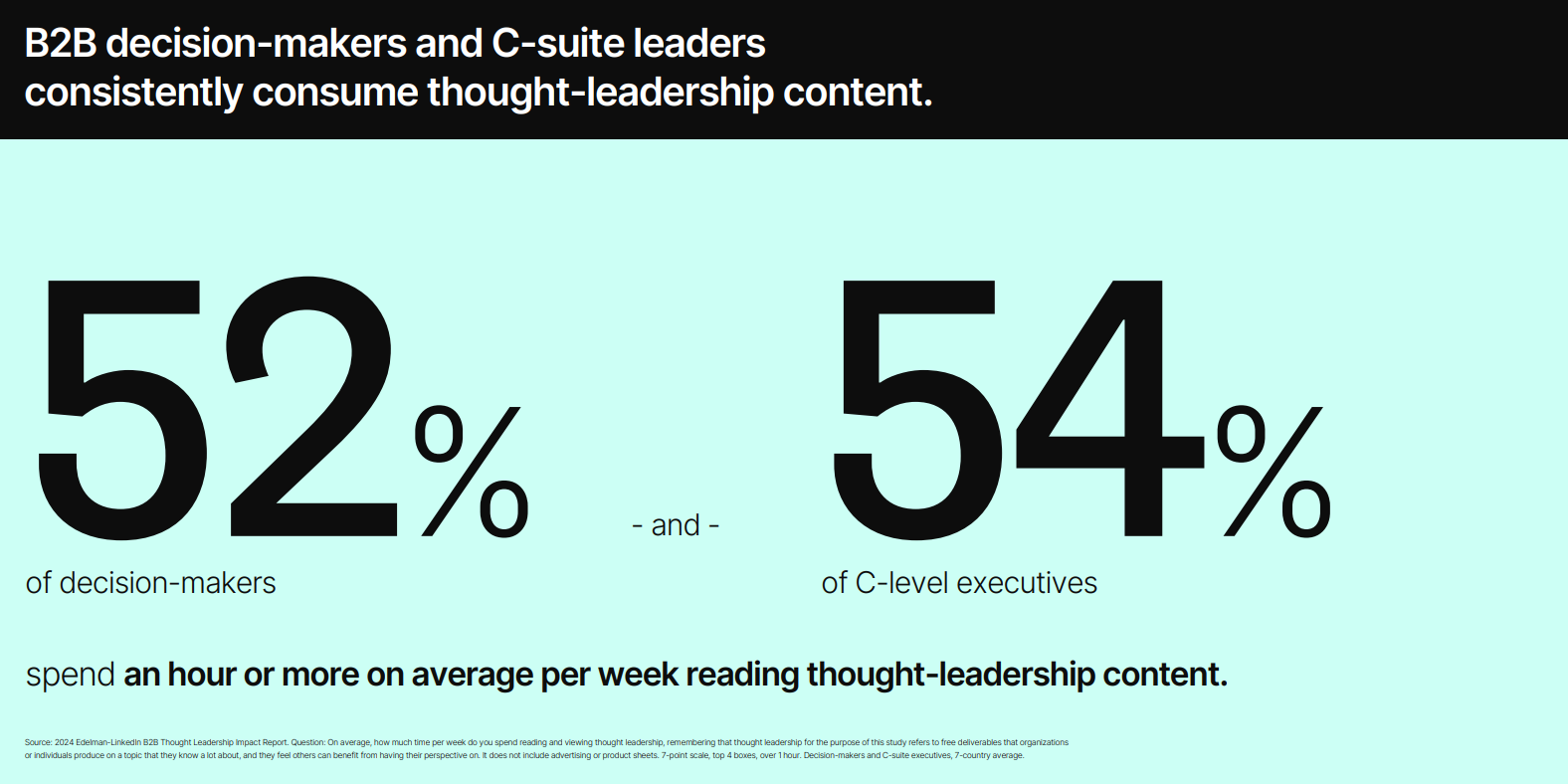
Let’s further see how those gains show up in day-to-day business performance.
Builds Trust and Credibility with Your Audience
Trust is the currency of modern commerce, and authoritative content backed by data is your fastest way to earn it. When readers see you link deep expertise to clear next steps and apply principles like Google E-E-A-T to prove experience, expertise, authoritativeness, and trustworthiness, then they begin to treat your articles, interviews, and podcasts as a reliable filter in a noisy market.
What does Google’s E-E-A-T really mean?
🧠 Experience = Real insights
📚 Expertise = Credentials
📢 Authority = Mentions & links
🔒 Trust = Secure, clean content
Xblog AI builds E-E-A-T-friendly content—by default.
👉 https://t.co/K81UtopBhq#XblogAI #SEO #EEAT #GoogleRanking— xBlog AI (@xblogai) April 21, 2025
Over time, that credibility extends beyond individual posts; prospects start quoting your viewpoints internally, journalists treat you as a go-to source, and peers invite you onto bigger stages. The result: a durable professional reputation that outlives any campaign.
Drives Brand Visibility and Recognition
Quality insights educate and get shared. Each whitepaper, keynote sound bite, or LinkedIn carousel can trigger searches for your company name, fueling branded search momentum and organic reach. Because audiences voluntarily share value-driven content, you unlock networks that paid ads rarely touch.
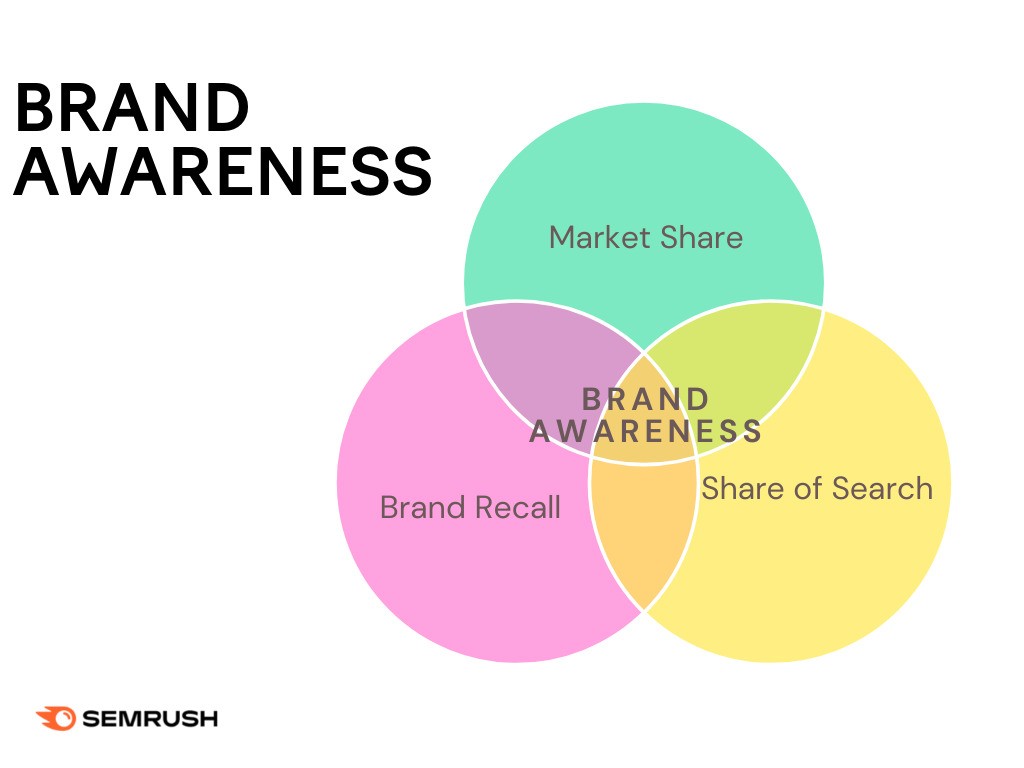
Gartner notes that 83% of B2B research now happens through digital commerce without conversations with the vendor. This means that products and services become discoverable through insightful material that positions you as the obvious shortlist pick. Layer in press mentions and podcast backlinks, and your brand stays visible even when buyers aren’t in the market, planting seeds that sprout into future revenue.
Attracts High-Quality Leads and Partnerships
According to the earlier-mentioned Edelman research, more and more executives tend to purchase from a company they’d never considered until its thought-leadership content reveals a new angle on their challenge.
Because these prospects self-select through shared curiosity, they arrive with higher intent and shorter onboarding friction. The same magnetism appeals to strategic partners like consultancies, technology vendors, and even investors who view aligned expertise as a fast track to joint value. Embed strong calls to action, gated research, or co-authored studies, and your insight engine becomes a predictable pipeline for partnerships and qualified deal flow.
Supports Long-Term Brand Equity and Authority
Consistently publishing signature frameworks, annual benchmarks, or forward-looking “next-era” analyses builds a lighthouse effect around your brand. Housing those assets in a well-structured brand asset management hub ensures every team, from PR to sales, can repurpose them without dilution, expanding reach while preserving message integrity.
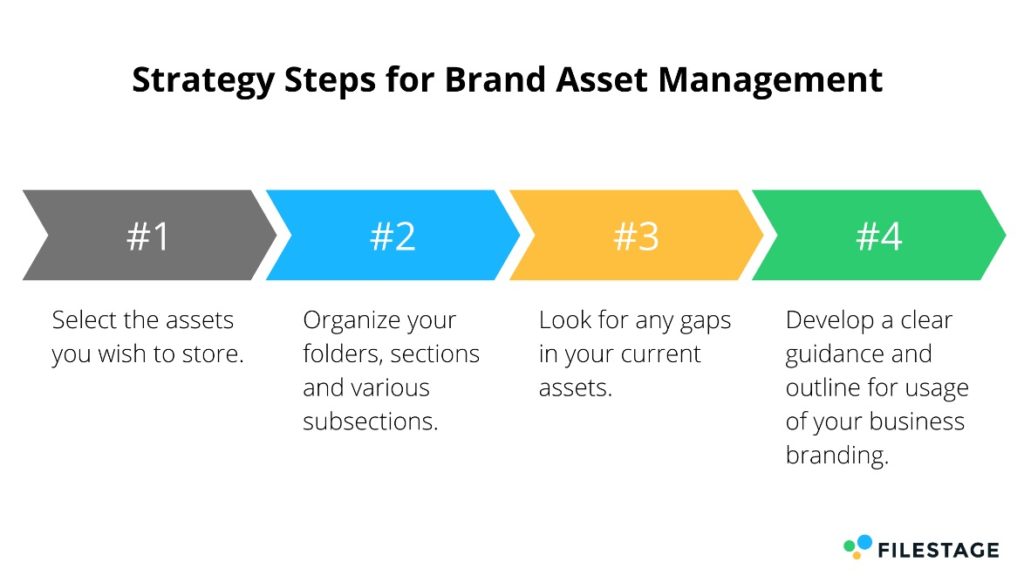
Over time, this library becomes an external proof point for analysts and procurement teams vetting suppliers, and an internal guidepost that aligns product roadmaps with market narratives. The cumulative effect is higher pricing power, reduced churn, and a most that competitors can’t easily copy.
Enhances Talent Acquisition and Employee Engagement
Thought leadership isn’t only outward-facing. It’s a recruitment magnet. Showcasing employee authors, spotlighting R&D breakthroughs, and amplifying wins through online reputation management and targeted social media marketing services signal a culture of innovation. Internally, seeing their peers influence the industry boosts pride and retention, while giving subject-matter experts a platform to grow their own brands. The payoff is a virtuous cycle where engaged experts fuel better content, and better content attracts more experts.
Key Elements of a Thought Leadership Strategy
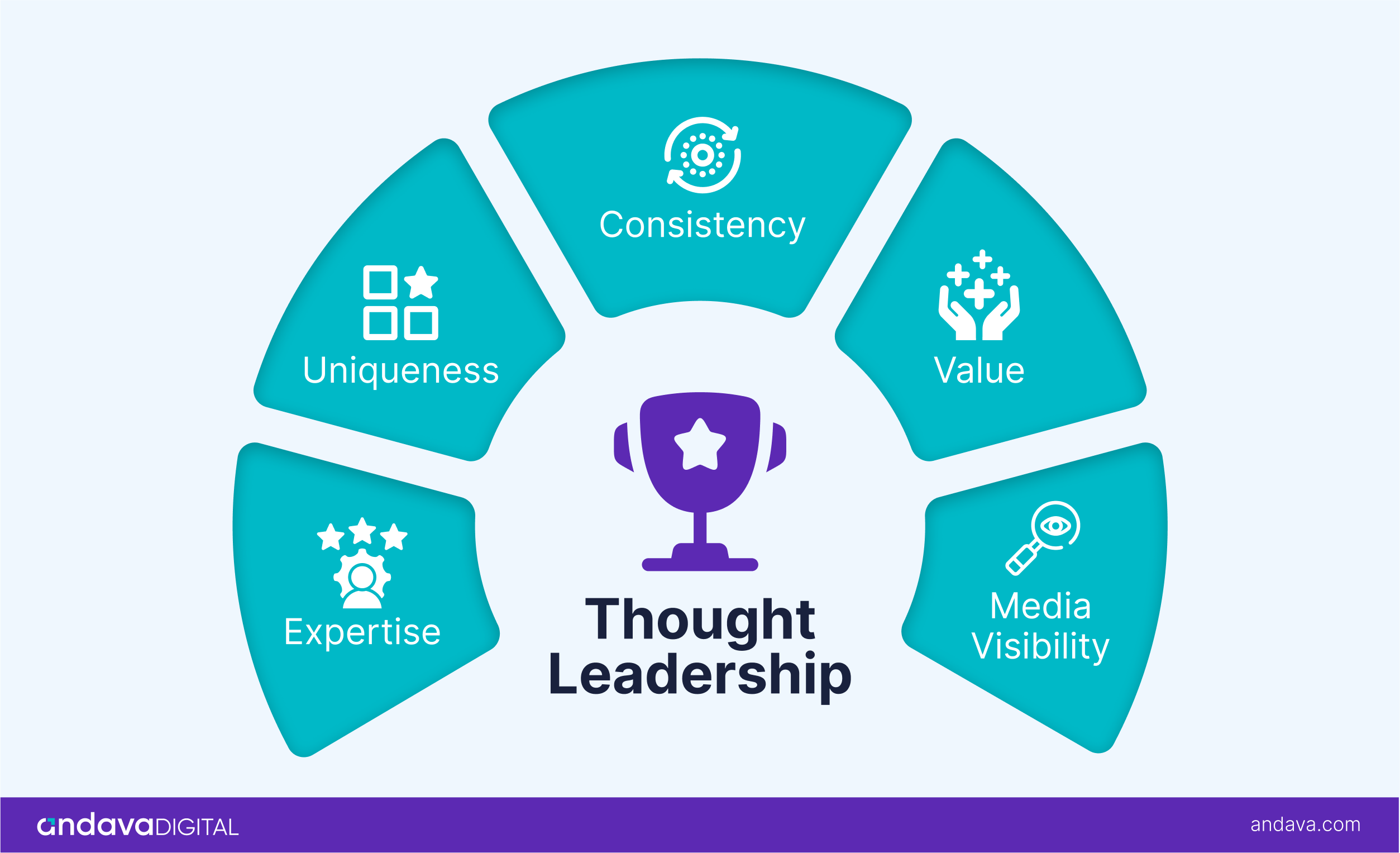
View becoming a trusted voice as a system, not a one-off blog writing or posting a viral keynote once in a while. At its core, a strong strategy is built on repeatable actions that consistently signal authority, originality, and relevance.
Here are the pillars that matter most:
- Expertise and a Unique Point of View: Don’t just repeat what’s already out there. Define where your perspective adds to the conversation. Whether it’s years in the trenches, niche research, or a contrarian take, make your voice unmistakable.
- Consistent and Valuable Content: Whether you share weekly posts, quarterly reports, or an annual trend forecast, consistency builds trust. Focus on answering real questions with insight, not fluff.
- Visibility Through Speaking and Media: Apply to speak at niche conferences. Pitch guest columns. Show up on podcasts. Strategic visibility multiplies your reach and cements your leadership positioning across audiences, from clients to peers.
How to Build Thought Leadership
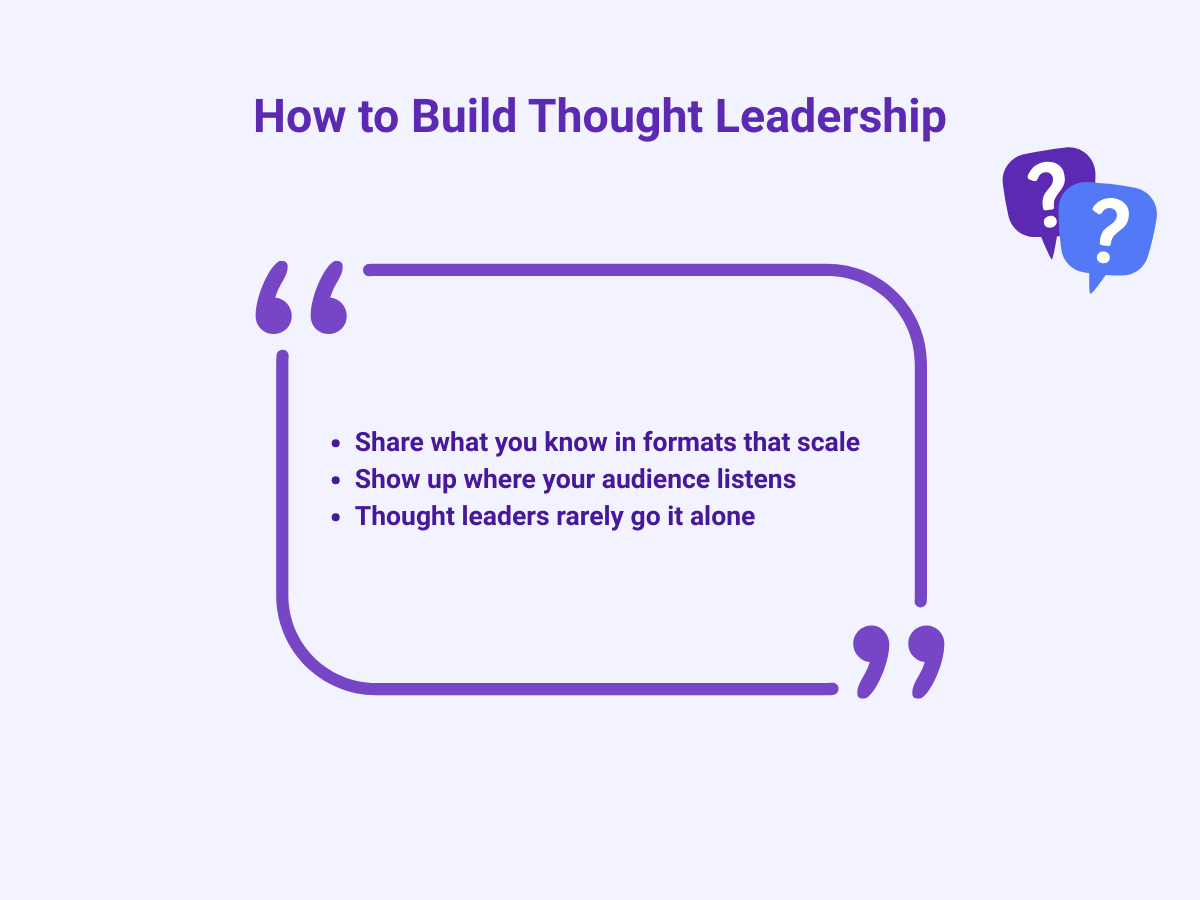
Establishing thought leadership doesn’t require a media empire, just focused, consistent action. Start here:
- Share what you know in formats that scale: Publish original research, whitepapers, or sharp blog posts. Break down trends, offer frameworks, or simplify what others overcomplicate.
- Show up where your audience listens: Speak at industry events, join webinars, or post regularly on LinkedIn and X (formerly Twitter). Visibility turns insight into influence.
- Thought leaders rarely go it alone: Partner with peers, co-author reports, or join expert panels. Shared credibility builds faster and takes you further than solo efforts.
Measuring the Impact of Your Thought Leadership
You can’t improve what you don’t measure.
While thought leadership is often seen as a long game, there are clear indicators that show whether your insights are landing, spreading, and driving business outcomes. From engagement and reach to revenue influence, the right mix of metrics helps you double down on what’s working and refine what’s not.
Engagement Metrics: Tracking Audience Interaction
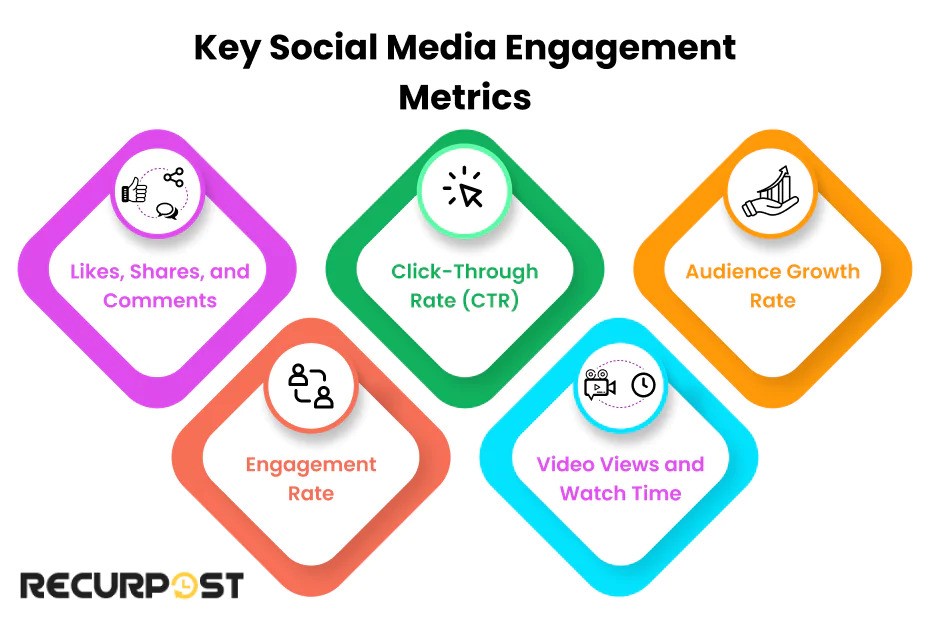
Start with what’s closest to the content itself, which is audience interaction. Engagement metrics like social media likes, shares, comments, and reposts are surface-level signals, but they show immediate resonance. More telling, however, are deeper indicators: how long people stay on your blog, whether they finish your videos or podcasts, or how many come back for more.
Time-on-page and watch-through rates reveal not just attention, but relevance. If your content consistently holds interest and invites conversation, that’s a strong sign your thought leadership is delivering value and building connections.
Influence Metrics: Assessing Reach and Authority
Beyond likes and views lies influence, denoting how far your voice travels and how often it’s invited into new rooms. Growth in followers across LinkedIn, X (Twitter), and newsletters signals expanding reach, especially when it includes decision-makers.
Another thing is working to obtain backlinks to your content from reputable sites to not only improve SEO, but also validate your position as a source worth citing. These indicators show that your thought leadership strategy isn’t just seen, but respected and shared by others in the space.
Conversion Metrics: Linking Thought Leadership to Business Goals
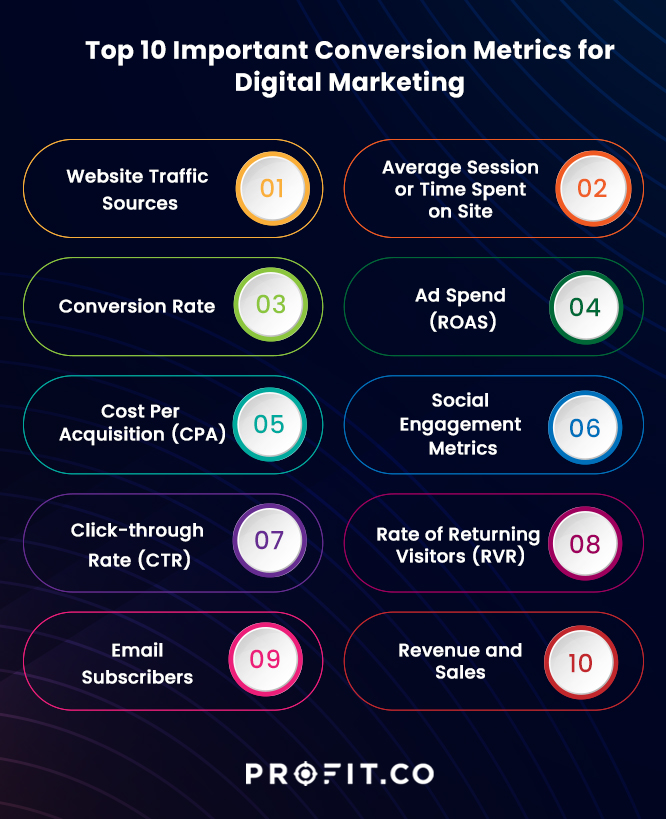
At its best, thought leadership drives action. Track how your insights contribute to lead generation. This can be easier via gated downloads, newsletter sign-ups, or demo requests. Monitor mentions in sales conversations or RFPs (requests for proposal) where your content influenced trust. When a blog post helps close a deal or a webinar gets cited in a final pitch, you’re not just publishing ideas, you’re accelerating outcomes.
Long-Term Impact: Beyond Vanity Metrics
Real thought leadership leaves a legacy. It shows up in invitations to keynote top-tier industry events, in co-authored reports with recognized peers, and in the kind of sustained audience loyalty that can’t be gamed. When people return to your content year after year or proactively ask what you think about a trend, you’ve moved beyond visibility into lasting influence.
These moments don’t always fit into dashboards, but they’re strategic signals. They show that your voice isn’t just part of the conversation but the force shaping where it goes next. In the long run, that trust becomes one of your most valuable business assets.
Thought Leader Examples by Category
Some of the most effective thought leadership examples come from individuals who’ve consistently turned their expertise into vision and their vision into industry shifts.
Technology & Innovation
- Elon Musk is a defining example of thought leadership through bold action and continuous reinvention. Through Tesla, SpaceX, and now X (formerly Twitter), Musk doesn’t just comment on trends, but creates them.
His credibility stems from building what others thought impossible, and his communication style, often defined as direct, unfiltered, and polarizing, keeps him at the center of global tech conversations. While not every professional can (or should) mimic his approach, Musk’s influence shows the power of aligning product vision, public narrative, and personal branding.
- Satya Nadella, by contrast, represents a quieter but equally powerful form of influence. As Microsoft’s CEO, Nadella redefined the company’s culture, shifting its identity from a legacy software giant to a forward-looking cloud and AI powerhouse.
His thought leadership shows up in how he communicates transformation through empathy, strategic clarity, and trust-building. Nadella’s leadership positioning stems from his ability to humanize complex technology and guide Microsoft through one of the most successful reinventions in corporate history.
Marketing & Branding
- Seth Godin has built a decades-long career by reshaping how marketers think, not just what they do. Through books like Purple Cow and his widely read blog, Godin challenges conventional thinking and encourages marketers to be useful, remarkable, and human. His thought leadership is often characterized by his storytelling abilities. Godin’s consistent content output and distinct point of view have made him a perennial reference point in branding discussions.
- Ann Handley is another leading voice in marketing, particularly in the realm of content. As the author of Everybody Writes and a founding partner at MarketingProfs, Handley combines deep subject knowledge with an approachable, humorous style.
Her emphasis on authenticity, simplicity, and human connection has helped thousands of marketers shift from jargon-filled copy to genuine conversation. Handley’s success lies in her consistency, publishing newsletters, speaking at events, and being a trusted voice across channels, all while maintaining a clear, relatable tone.
Finance & Business Strategy
- Warren Buffett exemplifies long-term, value-based thought leadership. His annual letters to Berkshire Hathaway shareholders are studied not only for investment advice but also for business wisdom and ethical clarity.
Buffett’s ability to make complex financial strategies sound simple and to stand firm in a world driven by trends has earned him trust across generations. His thought leadership is proof that expertise, transparency, and patience can be just as powerful as disruption.
- Steve Jobs’ influence on how businesses think and operate goes way beyond tech. Jobs wasn’t just selling devices, he was selling an idea. He made simplicity, design, and emotional connection part of the product itself. That shift changed the game for how companies build brands and approach innovation.
Every time he took the stage, whether it was a product launch or a keynote, he told a story. He didn’t just pitch features, but gave people a reason to care. That kind of clear, purposeful messaging, backed by focused execution, took Apple from near failure to becoming the world’s most valuable brand.
For today’s leaders, Jobs is a prime example of what it looks like when vision, product, and purpose are all in sync. He led a company and showed how powerful thought leadership can actually shape markets and mindsets.
Final Thoughts
Thought leadership isn’t built overnight, but with the right strategy and patience, it becomes one of your strongest business assets. By consistently sharing valuable insights, showing up where it matters, and measuring what moves the needle, you can position yourself as a trusted voice in your industry.
Thought leadership isn’t just about being seen, but about being remembered for the right reasons. At Andava Digital, we help you turn your expertise into authority with the right mix of content strategy, brand positioning, and digital visibility.